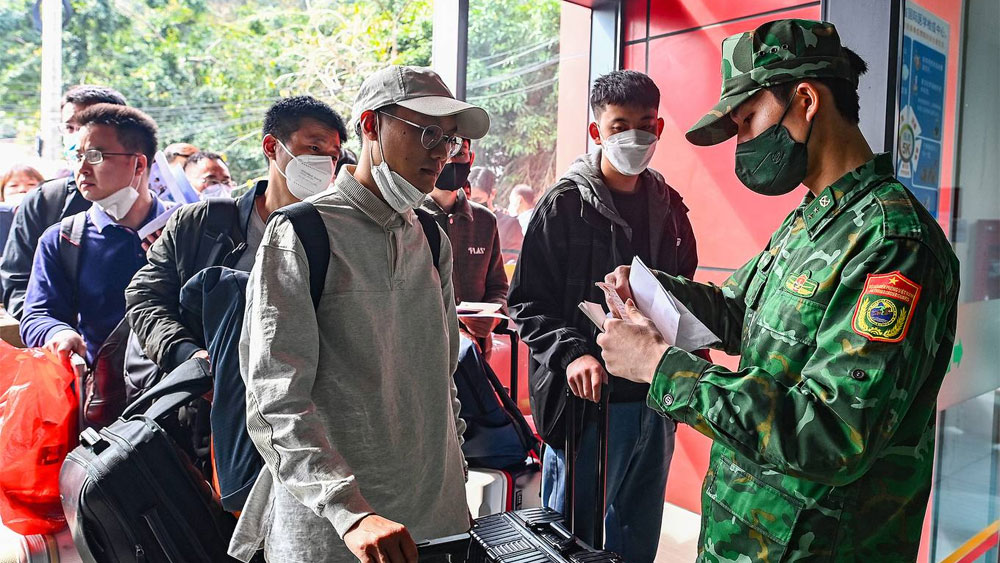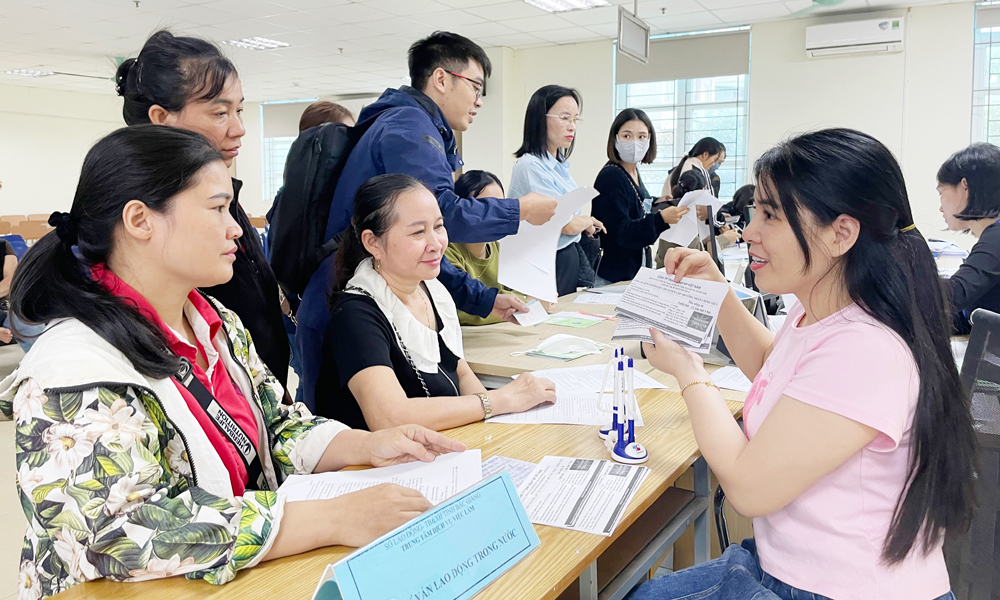Vietnam to ramp up border health screenings amid concerns over Omicron subvariant
In a document issued Sunday, Chinh said that coronavirus variants constantly change, including an Omicron subvariant called XBB, which is more contagious and which evades the immune system better than the original Omicron variant.
 |
|
Chinese people perform procedures at a border gate in Lang Son in northern Vietnam, January 8, 2022. |
The XBB subvariant has been detected in HCMC and its neighbor Tay Ninh Province, which the health ministry said could potentially lead to more Covid-19 cases in the future.
Its close cousin, XBB.1.5, has been causing new Covid-19 outbreaks in several countries, Chinh said.
He said further that the effects of vaccinations wane over time, despite high vaccination rates, which means that there could be a jump in new cases in the spring as a result of the Lunar New Year holiday and certain countries relaxing their Covid-19 prevention measures.
In addition to ramping up disease prevention measures at the border, Chinh also called for increased monitoring in the community and medical facilities to detect new variants early. The vaccination progress should also be bolstered to make sure that elderly people, those with underlying conditions and those who are immunocompromised are vaccinated on schedule. Children between age 5-12 should continue to be vaccinated as well.
The Ministry of Health must closely follow the Covid-19 situation both inside and outside of Vietnam to be ready for any development. The ministry should also collaborate with localities to prevent common springtime diseases, he said.
The PM tasked the Ministry of Culture, Sports and Tourism with instructing tourism businesses to take measures to protect tourists and locals.
On Sunday, China opened its border following a long period of Covid-19 restrictions. Border gates in Lang Son and Quang Ninh saw thousands of Chinese citizens returning home, while many experts, workers and Vietnamese citizens also returned to Vietnam through the gates as well.
The XBB subvariant was first detected in August 2022, and over the past four months, it has spread to around 70 countries and territories. The WHO said the XBB subvariant, as well as its close cousin XBB.1.5, are responsible for 44% of all Covid-19 cases in the United States, and also caused new infection waves in certain Asian regions, including India and Singapore, last October. The two subvariants will gradually become dominant in the future, the WHO predicted.
Source: VnExpress
 Bắc giang
Bắc giang













Reader's comments (0)